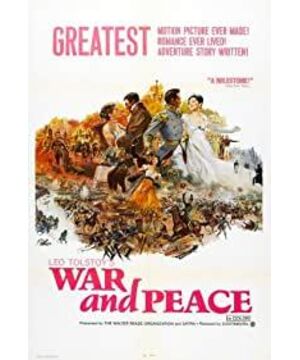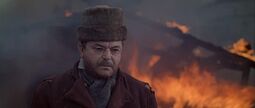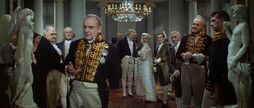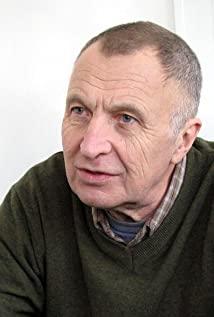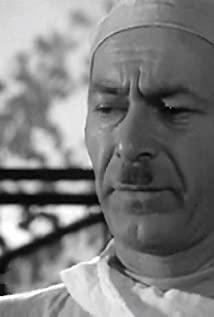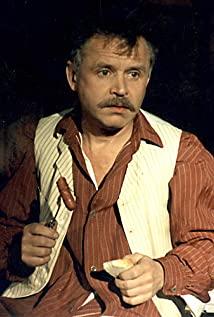For this film, the film’s chief director Sergey Bondarchuk once said: "The main and only goal we set for ourselves is to reproduce Tolstoy as completely and accurately as possible on the screen. We want Use modern film methods to reproduce Tolstoy’s thoughts, feelings, philosophy and ideals." The film is adapted from the famous Russian writer Leo Tolstoy’s work "War and Peace" of the same name, based on Russia between 1805-1820 The city and the countryside are the background, reflecting a series of major historical events at that time. In it, Tolstoy showed his deep concern for the eternal spirit of mankind. In the book, he explored the way out of the country, the influence of religion, and the promotion of morality on history. It is a splendid mansion constructed by Tolstoy with his own political, religious and historical views, and a classic that transcends the country and the times. The structure of the work is magnificent and the span is long, reflecting the author's excellent writing skills and profound thought. The whole book shows that people have an eternal desire for life no matter during war or peace. It is not only a magnificent epic of patriotic heroes, but also an epic of people's hearts, an epic of life. The film centers on the Russian Patriotic War of 1812. Vividly reproduced the major events of Russian society during the war and various areas of life. In the intertwined lens performance of war and peace, front and rear, many major historical events were reproduced, reflecting the style of Russian society in a whole historical period. People's desire, pain, joy and pursuit. These included the Battle of Austerlitz, the Battle of Porodino, the Moscow fire, and Napoleon's retreat. Through the four noble families—Borkansky, Besukhov, Rostov, Kulakin, and the protagonists Andrei Paulkansky, Pierre, and Natasha in a war and peaceful environment The description of the thoughts and actions in the book shows the style of Russian society at that time and the process of perfecting the personal personality of the individual in the war. From an adaptation point of view, the film was very successful. It is divided into four parts like a novel, and it lasts for nearly seven hours. In terms of exhaustive details and the pursuit of truth, no movie can compare to it. The battlefield of Borodino, which is full of flesh and blood, the luxurious and luxurious upper-class ball, is called the Moscow fire that illuminates his soul by Alexander II, the retreat of the French army that was dragged down by the scorched earth policy of Russia, the snow and the wind are combined In the winter of Russia, every scene is very grand. The luxurious palace ball, the splendid opera house, and the spectacular hunting round up all show the great power of Russia. It is particularly worth mentioning that the contrast between the war scenes in the film is particularly striking, whether the bloody and violent battle between the two armies, the heat of the Moscow fire, or the large-scale terrorist robbery by the French army, the cruel torture of the prisoners, especially from the air. The long shots of the French army fleeing horribly across the ice and snow for dozens of miles were all taken in a thrilling, tragic and shocking manner. These campaigns include spring campaigns and winter campaigns. There are artillery positions, cavalry campaigns, infantry fighting and other combat forms. The magnificent expressions of offensive, defensive, retreat, and pursuit strategies and tactics. For example, the offensive team type of the infantry phalanx, the choice of the terrain of the artillery position, the situation of crossing the river and fleeing from ice and snow, etc., gave a detailed description of the war in terms of time and scene changes. Although the scenes of these battles are magnificent, a lot of valuable war information can be found from various details. For example, when Napoleon's army retreated to cross the river, the Russian generals waited until they were halfway through before launching an offensive, to hit Napoleon's army to the greatest extent. As a military genius Napoleon who had never been disadvantaged in the European battlefield before, he could only tighten his coat and leave tragically at this time. In Tolstoy's novels, the time span is as long as twelve years, and the growth of the characters and the development of events are gradually becoming fuller. The Soviet Union took five years to shoot, so it can show the changes of time and the course of life in the novel in the film. This is best shown in the image and shaping of the three main characters. When Pierre first saw Natasha at Rostov's house, she was a thirteen-year-old child running around under the armpits of adults. Maybe she has fallen in love with him since then, but she is like a fantasy subconsciously, she still doesn't know very well. Andrei Paulkansky's dispute with Pierre on the eve of the Battle of Porodino. After being injured, he was lying on the battlefield unsmoked by the gunpowder. Facing the pressing footsteps of death, he looked at the top of his head. The deep and brilliant starry sky and the monologue in my heart are full of thoughts on the poetry and philosophy of life, rigorous and romantic. Dying in the film is an endless darkness, first a small black spot on the screen, and then expanding like a cancer cell, bit by bit swallowing all the light on the screen. Andrei Paulkansky gradually approached death in his sleep. He walked solemnly in the darkness until he was completely submerged. After the war, Pierre went to visit André Paulkansky's sister Mary. He sadly talked about Andrei Paulkansky's last understanding with Natasha, saying that it was fate that brought them together. In Pierre's narration, there is always a woman in black sitting silently behind the living room on the screen. Mary asked Pierre: Did you not recognize her? Pierre looked at the woman now. It was a beautiful and peerless face, with both sadness and joy. She did not have any decoration, a pair of extremely clear eyes reflected in a black cloak. It seemed that a light suddenly shone on Pierre's sad face, and the picture became very bright. A series of shots flashed back, all of Natasha from a long time ago: running and laughing among the adults in a dress, looking back curiously at Andrei Paulkansky on the steps, and choking at the ball. Tears danced gently with the music... Then there was Natasha at this time, her eyes calm and serene, high and pure. Love is short, but life is long. Life is such a process, love, young, sad, tempered, and then the dust settles. Such wonderful shots with profound meaning and sincere expression are everywhere in the film. The most noteworthy thing about this movie is that it shows a real Russian temperament everywhere. Whether it's the golden and splendid fields in autumn, the hunting in late autumn, the magnificent churches, the palaces with surging heads, they all give people a huge sense of space. Through this large-space expression technique, it not only shows the rich Russian traditions, but also reflects the national spirit rooted in people's hearts and depicts the heroic color that shines on ordinary people during the war. It also played a role in contrast, explaining that Napoleon, a strong man, was defeated in Russia because he had very limited knowledge of a great nation. The film vividly portrayed more than 500 fictional or historical figures represented by Natasha, Andre Paulkansky and Pierre, reflecting the heaviness and depth of the Russian spirit. Historical events such as the European Battle of 1805, the Russian Patriotic War of 1812, the Porodino battle that determined the fate of Russia and France, and Napoleon's Moscow retreat, have affected the character, relationship and development of the characters. The two themes of war and peace are integrated into all aspects of the characters’ lives, such as birth, growth, love, friendship, social interaction, marriage, struggle, confusion and transcendence, death, etc., reflecting the life from beginning to end, from hesitation to firmness , From exploration to perseverance, from innocence to maturity, from pain to tranquility. The film also fully demonstrated the daily life of Russia in the 19th century, people's clothing, social life, traditions, psychological characteristics, as well as the heroic deeds of the people, and the glorious glory of the army, which strongly shocked and infected the viewers. This nearly 7-hour Russian version filmed in 1968 is an exquisitely crafted and rigorously conceived macro series. It is magnificent and exquisite in production. Its overall lineup is very strong. The film brings together Soviet films at the time. Leading performing artists in the world: Tikhonov, Ranovoi, Yefremov, Kotorov, Wilkinskaya, Strelichek, Tabakov, Skobce The director himself also played an important role Pierre. Tens of thousands of scenes and countless scenes make the visual effects of the film magnificent and magnificent. It inherits the Soviet Union’s tradition of shooting historical and military films. It perfectly incorporates the spirit of Tolstoy’s original works and reproduces Russia. The vast historical picture scroll of Russia during the French War can be said to be the best interpretation of Tolstoy's original works. Both strongly shocked and infected the viewers. This nearly 7-hour Russian version filmed in 1968 is an exquisitely crafted and rigorously conceived macro series. It is magnificent and exquisite in production. Its overall lineup is very strong. The film brings together Soviet films at the time. Leading performing artists in the world: Tikhonov, Ranovoi, Yefremov, Kotorov, Wilkinskaya, Strelichek, Tabakov, Skobce The director himself also played an important role Pierre. Tens of thousands of scenes and countless scenes make the visual effects of the film magnificent and magnificent. It inherits the Soviet Union’s tradition of shooting historical and military films. It perfectly incorporates the spirit of Tolstoy’s original works and reproduces Russia. The vast historical picture scroll of Russia during the French War can be said to be the best interpretation of Tolstoy's original works. Both strongly shocked and infected the viewers. This nearly 7-hour Russian version filmed in 1968 is an exquisitely crafted and rigorously conceived macro series. It is magnificent and exquisitely produced. Its overall lineup is very strong. The film brings together Soviet films at the time. Leading performing artists in the world: Tikhonov, Ranovoi, Yefremov, Kotorov, Wilkinskaya, Strelichek, Tabakov, Skobce The director himself also played an important role Pierre. Tens of thousands of scenes and countless scenes make the visual effects of the film magnificent and magnificent. It inherits the Soviet Union’s tradition of shooting historical and military films. It perfectly incorporates the spirit of Tolstoy’s original works and reproduces Russia. The vast historical picture scroll of Russia during the French War can be said to be the best interpretation of Tolstoy's original works.
Planning time: It took a total of 12 years from the start of planning in 1955 to the completion of the shooting in 1967. Investment and box office: The cost of filming was about 130 million U.S. dollars in 1967 (equivalent to the current U.S. 560 million), making it the most expensive film in film history. The export swept the entire Western film market. Japan alone allowed the Soviet Union to withdraw its investment in that year. Japan re-released the film on a large scale in 1971, and the box office remained hot). At that time in Japan, the Soviet film "War and Peace" was hard to find. Material and manpower invested: Total number of actors: 595,193. There are 36 important characters and 599 dialogue characters. The filming of the film received great assistance from the Soviet military, and even the military tried to make the number of troops in the film as similar as the actual number of participants in the battle. In the world's film history, this film has become one of the most used extras. Clothing: 20,900 sets, of which 47 factories provide general clothing such as military uniforms, military caps, and monks’ clothes for the film. Saddlery and leather products are produced by two factories. Sets built: 302 places. Among them, 118 large-scale location bases have been built. The largest set is a large-scale set with an area of 100,000 square meters built to photograph the Moscow fire. Other huge exterior bases built include: the Kremlin, downtown Moscow, Russian military camps, and Russian nobles’ gardens. Works of art: Borrowed 257 authentic works of ancient famous paintings and sculptures! Weapons and vehicles used: 160 cannons of the Tsarist era, more than 8,000 pistols, rifles and swords each. 205 horse-drawn carriages, trailers and other vehicles of the style of the time were manufactured. For aerial photography, more than 30 helicopters and 3 jets were prepared. In addition, the number of buses and trucks used is no longer available. 40 tons of fuel oil (including gasoline and kerosene). 52 tons of gunpowder for smoking. 23 tons of guns fired with gunpowder. 16,600 grenades. 6,600 smoke bombs, 4,500 fuses. The shooting of the scene of the Battle of Porodino: In order to shoot the real effect, a regular army was used to assist in the shooting. With 124,533 Soviet soldiers and 35,000 horses, a cavalry regiment was specially formed for this purpose. The Battle of Porodino was shot on the battlefield that year. There are as many as 35,000 uniforms made just for shooting. It took 35 days to shoot. The entire crew invested 48 million U.S. dollars (in 1967 currency value, equivalent to the current 170 million U.S. dollars) of production funding. During filming: 10 crew members were seriously injured, and many others suffered minor injuries such as skin injuries. At that time, the Soviet Union prepared 695 French Napoleon-style cannons and 587 Russian cannons of the same period, 20 of which were borrowed from the museum. 7000 swords. There are more than 3,000 prop guns such as pistols and rifles each. The amount of gunpowder used in the battle of Porodino: 12 trucks of smoky powder, 8 trucks of gunpowder for fire, and 9 trucks of smoke. Technical equipment during shooting: 7 70mm movie cameras equipped with wireless remote control devices are equipped, two of which are specially designed for handheld shooting. There are also 5 large cranes (acting as a boom), and 3 helicopters commonly used for aerial photography. The scene of the Moscow fire: It took two years to build a large-scale set covering an area of 100,000 square meters, 150 kilometers northeast of Moscow, including churches, government agencies, commercial streets, and residential houses, and then burned it clean. . . . . Music is the soul of movies. This film uses a large number of Russian folk songs as background music, which is magnificent, smooth and beautiful. The film also directly quotes Tolstoy's large amount of narrations and inner monologues of the characters, which helps the audience to understand deeply. Soundtrack performance team: composer and conductor: V. Ovchennikov. The length of the joint performance of the Moscow State Philharmonic Orchestra, the Soviet Radio Symphony Orchestra and its chorus: a total length of 1,540 kilometers, the completed master tape is kept in a gold box and is collected as a national treasure. Ovchennikov. The length of the joint performance of the Moscow State Philharmonic Orchestra, the Soviet Radio Symphony Orchestra and its chorus: a total length of 1,540 kilometers, the completed master tape is kept in a gold box and is collected as a national treasure. Ovchennikov. The length of the joint performance of the Moscow State Philharmonic Orchestra, the Soviet Radio Symphony Orchestra and its chorus: a total length of 1,540 kilometers, the completed master tape is kept in a gold box and is collected as a national treasure. Ovchennikov. The length of the joint performance of the Moscow State Philharmonic Orchestra, the Soviet Radio Symphony Orchestra and its chorus: a total length of 1,540 kilometers, the completed master tape is kept in a gold box and is collected as a national treasure. Ovchennikov. The length of the joint performance of the Moscow State Philharmonic Orchestra, the Soviet Radio Symphony Orchestra and its chorus: a total length of 1,540 kilometers, the completed master tape is kept in a gold box and is collected as a national treasure.
After reading this edition, no one should persuade me to watch the edition made in the United States over the past five years. In contrast, without even thinking about it, it is a purely American frivolous joke.
View more about War and Peace reviews


